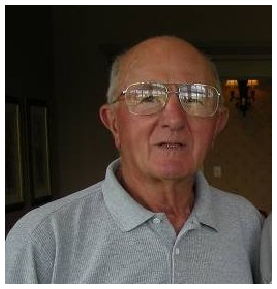February 2007 Article Wild Cards Archives:
Tennis Server
|

 |
by Tony Severino Certified Instructor 4A Professional Tennis Registry
No, it wasn't Bogie to Bacall. It was Bogart to Bergman. When he said: "Here's looking at you, Kid!," he was focused.
In his first acting role, Humphrey Bogart bounced onto stage in the bold striped blazer of the day and uttered his only line: "Anyone for tennis?"
Whether he was a tennis player or not when he looked at those two bombshells you can bet your sneakers he was focused.
Staying focused is probably the biggest problem for the recreational tennis player. We call it "concentration."
Concentration! On what?
The ball is the central point of focus, but there is a lot of information coming in that must be processed quickly beside where the ball is.
What is the ball doing--spinning, flat, arced, fast, or slow? Where am I on the court and where are my opponents? The brain must process these factors and, most importantly, figure out where is the ball going and how to get there in time. From there most of it is rote, based on experience and practice.
Even before you get there you must decide on a response. What shot to hit and where? It all happens quickly. Execution of the shot decided on now depends on your apperceptive background--experience and practice.
Peter Burwash once wrote that you need triple vision to see the ball, know where you are on the court and where your opponents are. That takes concentration and peripheral awareness. It also takes preparation.
The old System Five required you to be aware of the court zone you were in, how much backswing to take and how high over the net to hit the ball. That took practice; real concentration. It was a heavy load, perhaps too heavy for most club players.
It takes the brain about a tenth of a second to react to the information received from the eye. Seeing the ball off your opponent's racquet buys important milliseconds. Waiting on the ball longer also helps. If you merely react to the ball's current position, you will be late with your swing. You need to anticipate where the ball is going and when it will be there and have your response ready: preparation. This all happens before the point of contact is reached.
So what is this thing we call "concentration?"
Focus, yes!
Seeing the ball early, off the opponent's racquet.
Noting its action, flat, spinning, arcing, floating; its pace.
Anticipation, yes!
Determining where it is going and getting there.
Preparation, yes!
Using Peter's triple vision concept to select your response.
Where are you; where are they. What's my shot?
Shot Selection, yes!
While all this peripheral information is being processed mentally, shot selection becomes the tricky part. It's just you and the ball. What to do? What to do!
Execution, yes!
This final step is obviously by rote. You just do it, based on practice and playing experience. If you have to think about where your feet are, turning your shoulder, your grip on the racquet and other minutia, then you are not focusing on the ball.
Scott Tharp, Executive Director of the Arthur Ashe Youth Tennis and Education Administration in Philadelphia, PA., says "practice makes permanent." Practice develops your repertoire of shots and makes them maybe not perfect but permanent. Next, like sparring in boxing, recreational matches are where you hone a feel for how to use them.
When this becomes what Pavlov termed a conditioned response, then you can focus on the ball and use that great line from Bogey: "Here's looking at you, Kid!"
If you wish to provide a comment to the author of this Wild Cards column, please use this form. Tennis Server will forward the comment to the author.
1998 - 2003 | 2004 - Present
This column is copyrighted by the author, all rights reserved.
|



October 2022 Tennis Anyone: Patterns in Doubles by John Mills. September 2022 Tennis Anyone: Short Court by John Mills. |
 You will join 13,000 other subscribers in receiving news of updates to the Tennis Server along with monthly tennis tips from tennis pro Tom Veneziano.
You will join 13,000 other subscribers in receiving news of updates to the Tennis Server along with monthly tennis tips from tennis pro Tom Veneziano. 